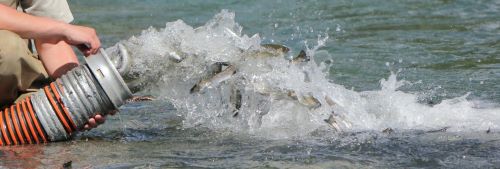Spring is the busiest time of year for our hatchery operations. Staff are working tirelessly at egg-collection stations, stocking fish into lakes and rivers across the province, and caring for the fish and eggs at the hatcheries.
Releasing fish into lakes
Most of the lake stocking events for the year occur between April and June. However, dependent upon the weather, water temperatures, ice melt, fish size, and research requirements, the stocking release date for lakes can vary slightly from year-to-year.
Fish that have been growing for the past five to 18 months are ready to be transferred to their new home. The fish are released as fry, fingerling, yearling, or catchable size. Some of the first lakes to be stocked are urban lakes near Vancouver and Victoria. Catchable-sized fish are released to create early opportunities to fish in these lower-elevation areas where water temperatures are warmer.
Most stocking during the spring is done by truck. Fish are loaded into the stocking vehicles’ big tanks, which are filled with oxygenated water. At the release site, large pipes are fitted to these tanks, and the fish are stocked into their new lake or river via gravity feed. For a few hard-to-reach locations, fish are loaded into a backpack container and carried into the lake.
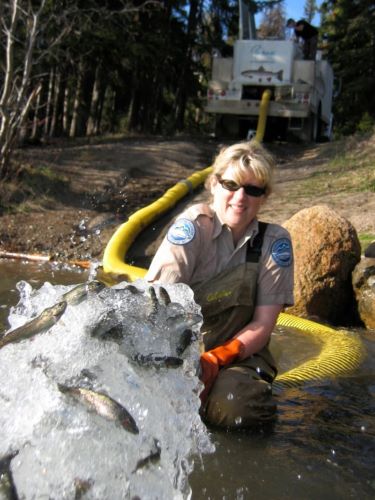
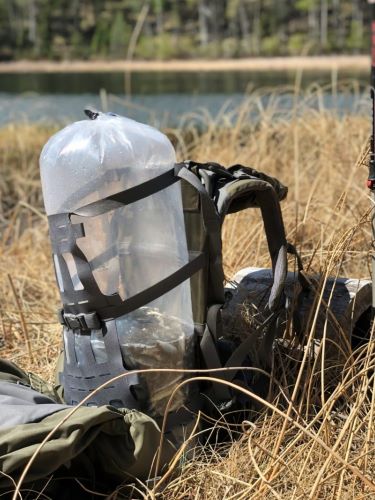
Rainbow, anadromous cutthroat, and steelhead trout are released by Fraser Valley Trout Hatchery. Rainbow, steelhead trout, and coastal cutthroat trout are released by Vancouver Island Trout Hatchery. Our Clearwater, Summerland, and Kootenay facilities release eastern brook and rainbow trout. Kokanee fry (a landlocked sockeye salmon) are also released by Clearwater and Kootenay facilities. Kootenay is the only hatchery to raise and release westslope cutthroat trout.
Releasing fish into rivers
Most fish raised and released by the Freshwater Fisheries Society are stocked into lakes. However, some anadromous cutthroat and steelhead smolts are also released into coastal rivers. The fish will journey to the ocean where they will spend part or most of their adult lives.
The Society works closely with the federal Department of Fisheries and Oceans and shares the rearing and releasing of steelhead. In the Lower Mainland, steelhead smolts are typically released into the South Alouette, Stave, Little Campbell, Capilano, Chilliwack, Seymour, and Chehalis rivers. In two years’ time, these smolts return as adult fish to spawn – and provide an exciting recreational fishery. On Vancouver Island, the Society assists the Robertson Creek Hatchery in May with the release of steelhead into the Somass/Stamp River.
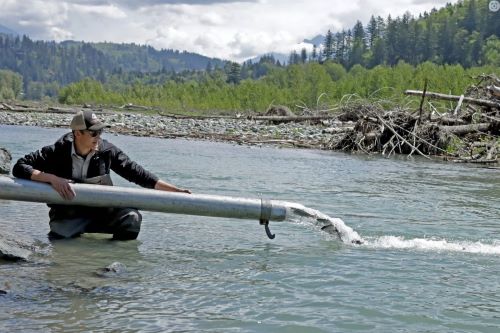
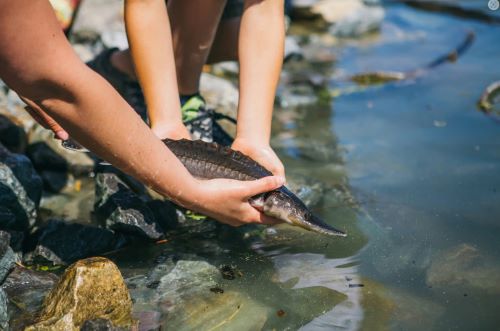
In addition to stocking fish for recreational purposes, the Society also manages special recovery programs for endangered species. In May, juvenile Nechako white sturgeon are released into the Nechako River near Vanderhoof, and juvenile Columbia white sturgeon into the Lower Columbia River and Arrow Lake south of Revelstoke.
Egg Collection
Society staff capture fish from designated broodstock lakes, and use them to spawn and fertilize eggs. The fish are either captured in net traps or in creek traps as they move from lake to stream to reproduce. Numbers of fish are monitored carefully to ensure that enough fish have passed through the traps to maintain the local population. Since conditions vary each year, staff must wait for the ice to come off the lakes, and daytime temperatures to rise, before installing the net and creek traps.
From April to early June, Society staff are busy collecting rainbow trout eggs from Dragon Lake, near Quesnel. These eggs are incubated at the Fraser Valley, Clearwater, Vancouver Island, and Kootenay Trout hatcheries over the summer, and eventually released in the spring of next year.
Eggs are also collected from Premier Lake in the Kootenay region. Eggs collected from this lake are incubated, then raised to be released as fry in the fall of this year, or as yearlings next year.
Beaver Lake, near Lake Country, and Pennask Lake, on the Thompson plateau, are other collection sites for rainbow trout eggs. Eggs have been collected at Pennask – the oldest egg-collection site in the province – since 1928.
The sole collection site for westslope cutthroat trout eggs is Connor Lake in Height of the Rockies Provincial Park. The Committee on the Status of Endangered Wildlife in Canada has listed the westslope cutthroat as a species of special concern. The Connor Lake egg-collection station is only in operation during even-numbered years.
Fish Spawning and Rearing
Since the Society releases fish at various stages of development, spawning occurs at many times throughout the year; incubation of eggs and rearing of juvenile fish are ongoing processes.
Read the next installments in this series to find out what happens at our hatcheries in the summer, fall and winter.
Author: Freshwater Fisheries Society of BC staff
